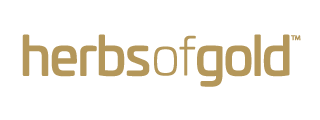
- Health advice
- Jan 15, 2017
During menopause, a woman’s hormonal balance undergoes a significant shift, signalling the end of her childbearing years.
According to traditional Chinese medicine (TCM), a shift in the balance of Yin (female energy) and Yang (male energy) occurs at the same time.
Taking an approach to menopause management that incorporates both these perspectives may help to relieve symptoms like hot flushes, sleeplessness, night sweats and moodiness.
Fusion Health, premium quality Australian-made supplements that combine the ancient wisdom of Chinese medicine and the science of modern Western herbalism, including:
Support Yin to relieve hot flushes and dryness
Many women experience a deficiency of Yin during menopause. Since Yin is considered responsible for keeping the body cool and moistening its fluids and tissues, deficiency commonly results in symptoms characterised by heat and/or dryness, such as hot flushes, night sweats, dry skin, and reduced vaginal lubrication. The Chinese herb Anemarrhena has traditionally been used to nourish the Yin and fluids while clearing heat from the body, and may help to address these types of menopausal symptoms, especially when taken with other cooling herbs, such as Dong Quai and Phellodendron.Balance Yin and Yang to calm emotional unrest
In other cases, Yang may be deficient relative to Yin, resulting in a tendency towards emotional unrest that can manifest as fatigue, mood swings, tension, irritability and reduced interest in sex. When this symptom pattern is present, Chinese herbs traditionally used to restore balance include Yang tonics such as Curculigo and Horny Goat Weed. Several Western herbs may also be beneficial, including Vitex (which has traditionally been used to help maintain menstrual regularity) and Black Cohosh (which has been shown to relieve a wide range of physical and emotional menopausal symptoms, including hot flushes, nervous irritability, sleeplessness and sexual disinterest).Eat less fat and sugar, but more fruit and fibre
Studies show that women whose diets are high in fat, sugar and/or alcohol experience more difficulty with hot flushes and night sweats during menopause than those who stick to a healthier way of eating. On the other hand, eating a Mediterranean-style diet or one that’s high in fibre and/or low in fat seems to reduce the risk of these types of menopausal symptoms, as does eating significant quantities of fruit. These modern scientific observations support the ancient wisdom of TCM, which regards many fruits as able to cool, moisten and nourish Yin. Apples, pears, plums and blueberries are considered particularly useful foods to support and build Yin, so try to include them in your diet on a regular basis. (Vegetables such as watercress, spinach and asparagus may be beneficial for similar reasons, as may tofu, barley and millet).Regular exercise decreases the severity of hot flushes
Exercise warms your body and makes you sweat, so if you’re suffering from hot flushes, the idea of becoming more active may not sound very appealing. However, research published in the Journal of Physiology in 2016 indicates that moderately intense exercise reduces the severity of hot flushes rather than making them worse. The study involved post-menopausal women who were experiencing more than four hot flushes per 24-hour period, and who were currently exercising for less than two hours per week. The participants started the study by doing half-hour sessions of moderate intensity aerobic exercise (like treadmill walking, running, cycling or cross-training) three times per week, and increased to four or five 45-minute sessions as their fitness improved. After 16 weeks of this regime, the participants reported that the severity of their hot flushes had declined, and tests also showed that associated physiological issues (such as sweat production) had also lessened. These effects are believed to occur because regular exercise improves both blood vessel function and body temperature control. Mr Vitamins recommends
Mr Vitamins recommends
Fusion Health, premium quality Australian-made supplements that combine the ancient wisdom of Chinese medicine and the science of modern Western herbalism, including:
- Fusion Menopause Free: A cooling blend of herbs traditionally used to relieve hot flushes and other menopause symptoms
- Fusion Menopause: Combines Black Cohosh with herbs traditionally used to restore inner balance and relieve menopause symptoms
- Herber-Gast G-CM, Mishra GD. Fruit, Mediterranean-style, and high-fat and -sugar diets are associated with the increased risk of night sweats and hot flushes in midlife: results from a prospective cohort study. Am J Clin Nutr 2013;97:1092-9
- Wong L, Knapsey K. Food for the seasons: eat well and stay healthy the traditional Chinese way. Red Dog Books, 2011.
- Bailey TG, et al. Exercise training reduces the acute physiological severity of postmenopausal hot flushes. J Physiol 2016;594(3):657-67
Related Articles
Recently Viewed
- ${ variant.price | currencyFromCents } | ${ variant.title } ${ variant.price | currency } | ${ variant.title }
Sale



















